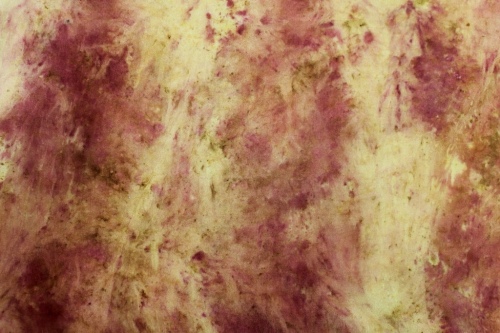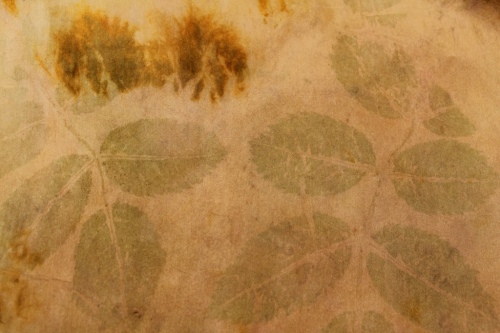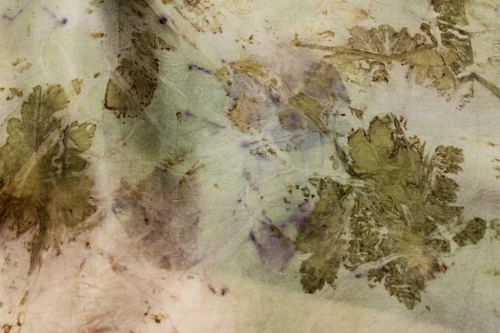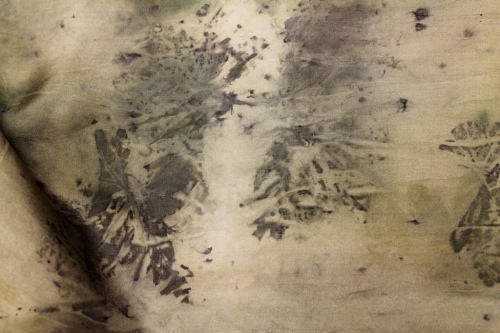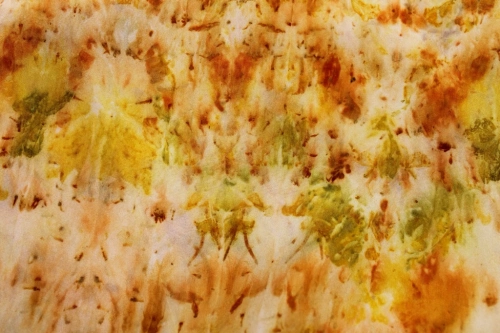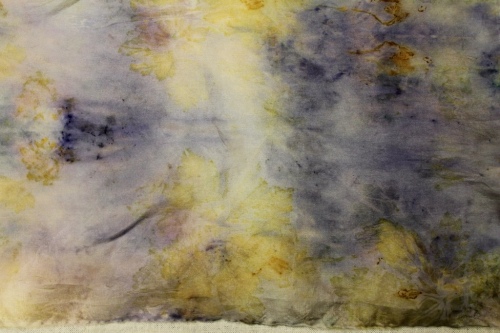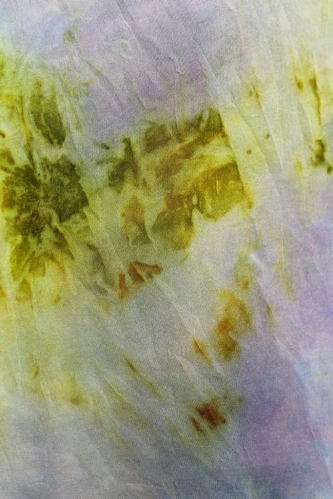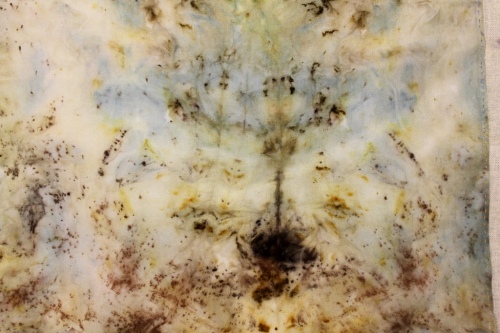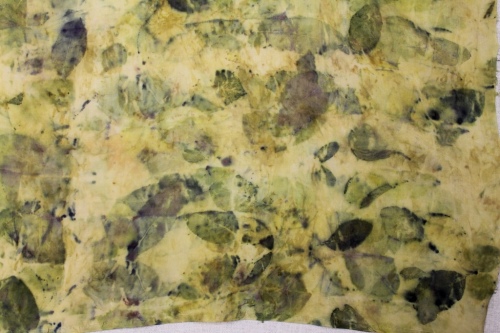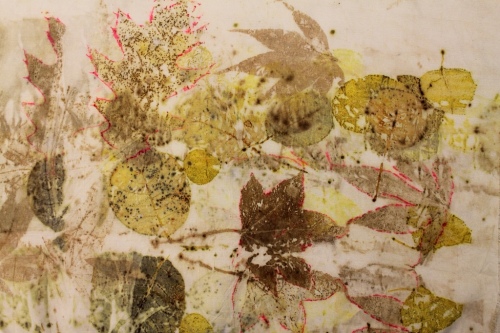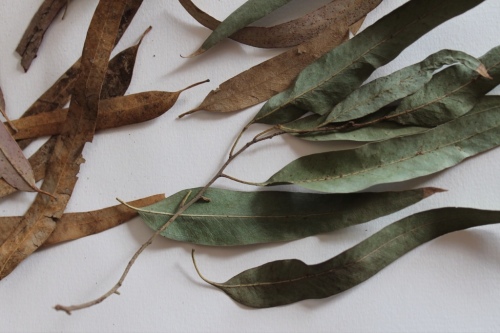It is the last day of November and the day of Saint Andrew, patron of Scotland ( Greece, too) and all Scots, even those like me from Orkney! Time to report on the month's art activities, though I will not be done writing before midnight Ottawa time; still, somewhere to the west of me it will still be Saint Andrew's Day.
But first, a goodbye to the colours of autumn in The Kaleyard, last seen in the early weeks of a milder-than-expected eleventh month:
Sumac and amelanchier:
Potted amaranth and kale:
A late assortment of fall colours, some from October:
The last one is the perennial geranium, a sturdy plant, green under the snow and trusty provider of colour in the eco print pot.
Here are some papers printed this month with geranium ( and cotinus)
A smaller geranium, greened by iron/rust in the dye pot:
…and cotinus: the little flecks of pink are lovely and most likely to show up at this time of the seasons.
Cotinus: Charcoaled by iron/rust neighbours in the bundle:
Geranium, two varieties, blackened and greened with iron/rust but still holding on to yellows:
As you might notice in the work of eco printers, yellow is a frequent colour. Some despair is possible.
But take heart, Dear Dyer. A solution is available from colour theory. ( As well as from some post- print tinkering- though not discussed here today – like touching up the colour with other dyes, paints or modifiers like iron liquor or copper liquor or ammonia. And no, post-print touching-up is not a ticketable offence according to me. You are the artist, and you get to do what you like with your art, especially in the establishing of your own purposes and the safe and rationale means of achieving them. )
Thus: To get the most of my yellows from season to season ( when they change value and even hue) I like to pair them with some strongly contrasting colours that can act as foils. In these prints, the contrasts come via rusty prints and cotinus; both leaves are tannin- rich that give deep charcoal or black in the environment of iron, and also some greens. Yellow and black are pretty powerful together.
And next, some more rust prints on paper, this time with indigo and tannins from tea: also powerful contrasts.
Winter wools are on my list of textiles for dyeing, and this year I am trying for that famous and popular ( but non-native hereabouts) eye-popping eucalyptus red introduced to us by our DownUnder Diva of Dyes, India Flint. I have a lot of dried euca around the studio saved from supermarket bouquets and welcome those Green Immigrants to the dye plant stash. Bundled with Prunus virginiana and immersed in a walnut dye bath ( Juglans nigra) prepared in a crockpot with the heat set to “low” and left overnight, some of my wool fragements look like this:
The prunus gave the teal greens and even purple, while the euca gave ranges of reds and orange with a tad of yellow. Of course, the walnuts give rich brown on wool ( though much paler on linen) So here, we get the power of analagous colours in teams beside colour complements in the red and green.
My most recent project this month was with Dylan, my wee grandson, aged six. We have done lots of painting and stamping and so forth on big sheets of paper, using a very basic palette of cadmium yellow medium, cobalt blue and some kind of red (we lost control of the inventory – most likely the red was cad. red) plus a nice metallic gold. Those paintings mount up – kids are decisive and prolific painters and do not hang about obsessing over the next brushstroke as we adults might tend to do. i heartily recommend a session with a six year old to get you out of your Art Rut. Just try keep up with that kid! But what to do with all our paintings as they piled up?
I hit on a plan to keep the works but to make them easier to store and fun, too. We will make books and boxes, said I!
So we have been making books and boxes from each single sheet painting, working with origami-type folds and no glue. This is an ongoing project, so today I am sharing just a few. The first is a wee box made in the style of the compartments in the Chinese Thread And Needle Case that I completed earlier this year.
For this one, Dylan and I stamped the paper with wooden Oshiwa blocks ( also reported on my blog in the past) and carved Indian textile blocks:
Others we made from painted papers:
And a larger box from some of my above-described geranium-cotinus prints:
If you want to try these boxes yourself, keep the ratio of the paper three times the size of the finished box; thus, the 'Geranium' box started with an 18″ square piece of paper and folded down to six inches and a tad as a box.
Here are some pics of a box under construction, to refresh your memory for the folding sequences: as you can see, you need to fold the large square of paper into a nice grid. The centred square (fold) is the bottom of the box when all the folds are in place. Two boxes fit on top of each other to make one box with a lid.
Next time, some more art from the studio with my young apprentice, who, bye the bye, was able to anticipate the next fold in his box as we went along…so you can do it, too! And it's a good time of the year to make gift boxes!
i shall likely post again about the art- from-grandkids' paintings sooner than I might otherwise do – I am grounded this week after a wee bit of surgery to my foot! But the mind keeps travelling, Dear Reader…and the hands can still move.
The blessings of Saint Andrew's Day on ya'all!
Wendy





































































































